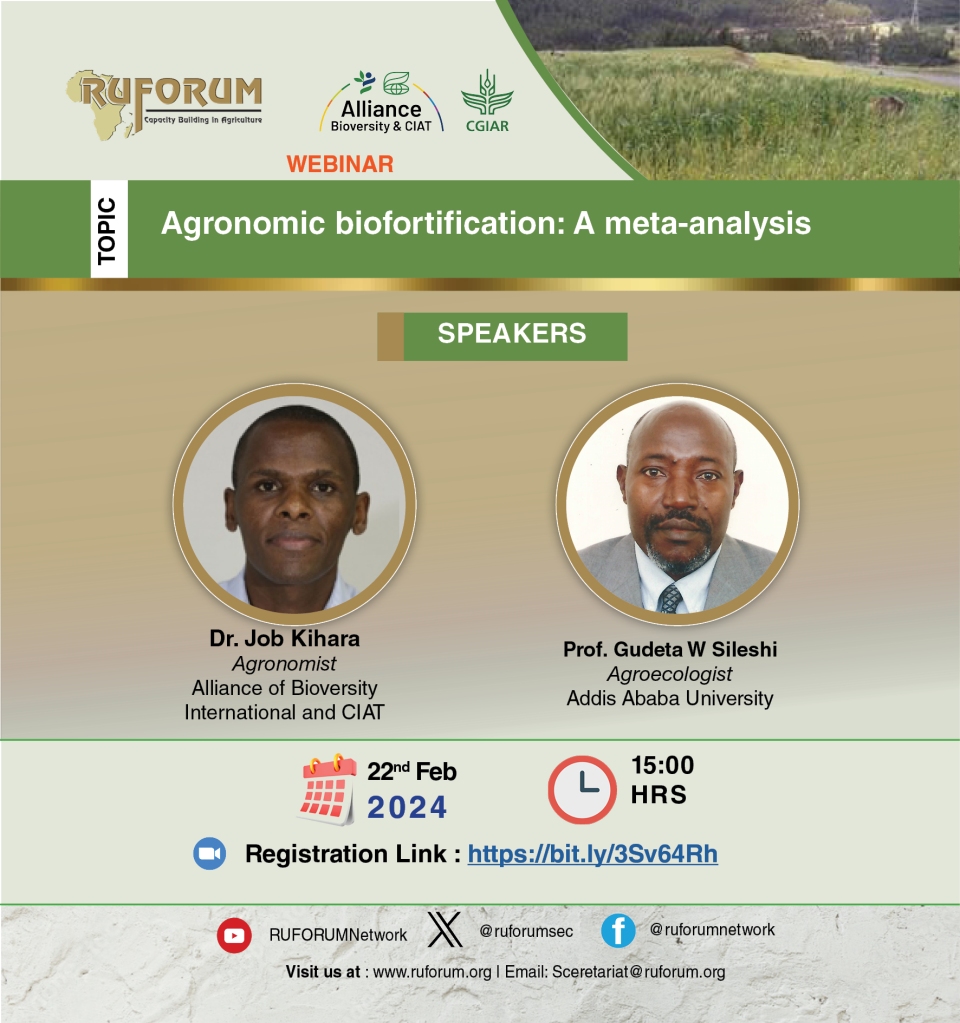Addressing zinc and iron deficiencies―Maize-grain zinc and iron concentrations as influenced by agronomic management and biophysical factors: a meta-analysis
Job Kihara, Dominic Mutambu and Gudeta Sileshi

Billions of people worldwide are facing or at risk from micronutrient deficiencies such as iron and zinc. Zn and Fe deficiencies are reported to affect up to 3 billion people and cause an estimated 2–5% reduction in the gross domestic products of developing countries. Zn deficiency alone affects up to 2 billion people worldwide resulting in more than 0.5 million deaths per year in infants and children below 5-years. Low concentrations of these nutrients in dietary intake can be associated low concentrations in produce. Agronomic biofortification, i.e., increasing the concentration of essential micronutrients in edible crop parts through agronomic management practices, has been suggested as a sustainable pathway to reverse the deficiencies. Different experiments testing agronomicbiofortification have been conducted with variable results. To understand the global distributions and gain insights on key conditions under which agronomic biofortification is achieved require a rigorous yet systematic approach that consider all the available studies. This approach, applicable across many other areas of research, is meta-analysis. This webinar will present the meta-analyses approach applied to agronomic biofortification in maize, from systematic retrieval of studies across scientific databases and libraries using designated meta-analysis and systematic review protocols, to meta-regression with highlights of key results. Meta-analysis is a rigorous quantitative approach for synthesizing results of multiple studies of a research question to draw an overall conclusion.
The maize global meta-analysis example: (1) Establishes the global distribution of Zn and Fe concentrations in maize grain; (2) Assesses different agronomic practices’ contributions to increasing maize-grain Zn and Fe levels; and (3) Identifies key biophysical factors to guide agronomic biofortification. Using 3707 data points in 120 published papers from 26 countries, results show: a 9.4% probability of grain-Zn concentrations exceeding the benchmark target of 38 mg kg−1; a 13.2% probability of grain-Fe concentrations exceeding the target of 60 mg kg−1; applying Zn and/or Fe in combination with inorganic NPK fertilizer increase maize-grain-Zn and-Fe concentrations by 31% (P<0.01) relative to the control (NPK only). Further, new evidence has been generated showing concomitant increase of grain-Zn and -Fe levels with grain-yield increases. Soil organic matter, pH, soil-available Zn, organic input applications, and N, Zn and Fe application rates and methods are among the key factors influencing grain Zn and Fe. Overall, applying Zn, especially in combined soil and foliar applications, gives substantial increases in grain-Zn and -Fe concentrations. This global review reveals large data gaps on maize-grain nutrient levels, and calls for routine collection of such information in future research.
This work is done by several colleagues under the Excellence in Agronomy initiative of the CGIAR.
Date: 22nd February 2024
Time: 15:00 hrs EAT
Leave a comment